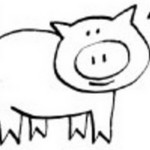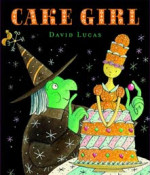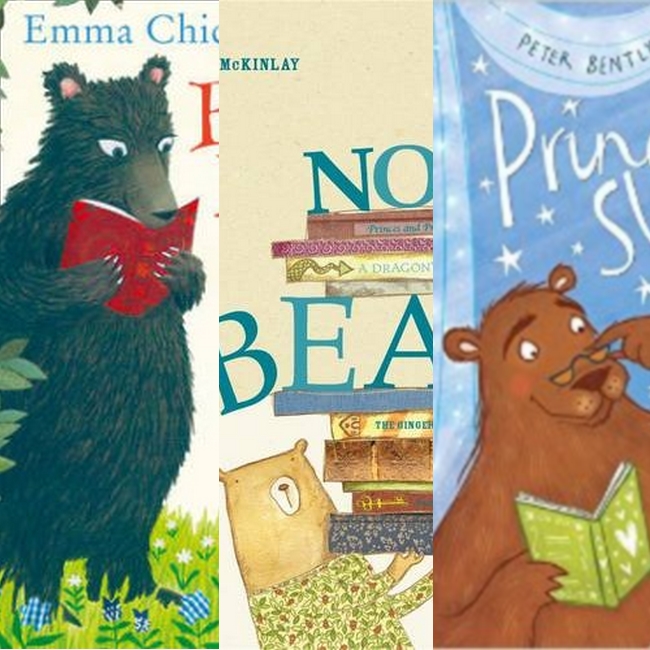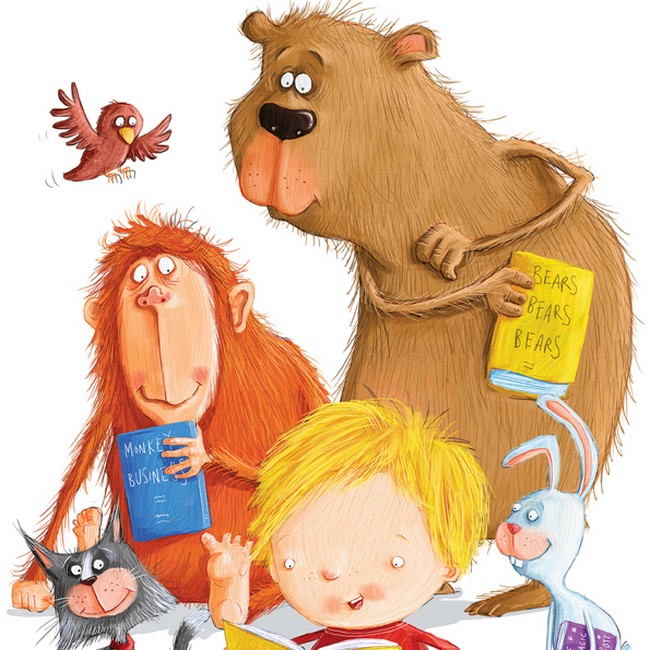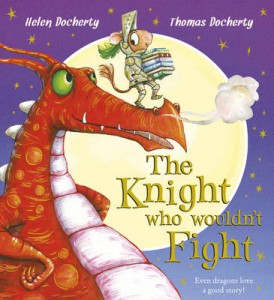 If you know this blog well, you will know my penchant for picturebooks which promote books, shared reading and reading for pleasure; you might even be aware I am writing a MA dissertation about this right now, though I won’t bore you with those details. So, as you can imagine therefore, I loved The Snatchabook (see my review here), the first “picturebook about reading” collaboration between husband and wife team Helen and Thomas Docherty and I was delighted that Helen wrote a guest post for its publication at the time. The publication of The Knight Who Wouldn’t Fight (Alison Green books) has therefore been long-awaited and could not have come at a better time.
If you know this blog well, you will know my penchant for picturebooks which promote books, shared reading and reading for pleasure; you might even be aware I am writing a MA dissertation about this right now, though I won’t bore you with those details. So, as you can imagine therefore, I loved The Snatchabook (see my review here), the first “picturebook about reading” collaboration between husband and wife team Helen and Thomas Docherty and I was delighted that Helen wrote a guest post for its publication at the time. The publication of The Knight Who Wouldn’t Fight (Alison Green books) has therefore been long-awaited and could not have come at a better time.
Leo the mouse isn’t like other knights, he’d rather read a book than fight, much to his parents’ despair. So when an opportunity to tame a dragon arises, his parents volunteer him, hoping this is his chance to change his mind and become a ‘real’ knight. Leo reluctantly takes the challenge and along the way meets other scary creatures who need his help. Leo uses his most powerful weapon to tame them, his books, and the power of stories.
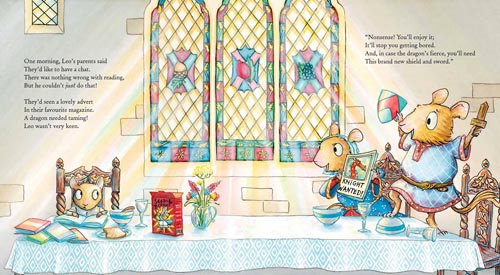
Using witty rhyming text and a similar soft and comforting colour palette to the one used in The Snatchabook, The Knight Who Wouldn’t Fight carries a strong message not only about the importance of reading, but also the power of reading and stories and how it makes us better people, people who choose reaching out over fighting, using references to mythical and traditional “baddies” to illustrate this in a way that children will understand. This might seem a romanticized, ideologized view of reading to some and I am sure many of the blood-thirsty dictators this world has suffered over the centuries loved books and reading, but the point of such a story is to show the wonderful possibilities that reading and sharing stories can bring us. Writing a picturebook aimed at preschoolers that shows that reading and loving stories makes you better at school, or gets you a better a job might work very well, but the best way to convey such messages is to confront them within a safe and entertaining terrain with themes they will understand and want to relate to (such as a being brave), and The Knight Who Wouldn’t Fight manages to do just that, conveying big ideas in a setting that is exciting and appealing for the targeted audience.
The rhyming text, which makes for a lovely read aloud, is where readers will find the overt messages about why reading and sharing stories is so important, but the artwork is where the covert, latent messages will be found. Two types of such messages are particularly striking in The Knight Who Wouldn’t Fight: images of closeness when reading and the use of light at nighttime. Both of these are vital to children in the preschool years, both convey safety and comfort to them.
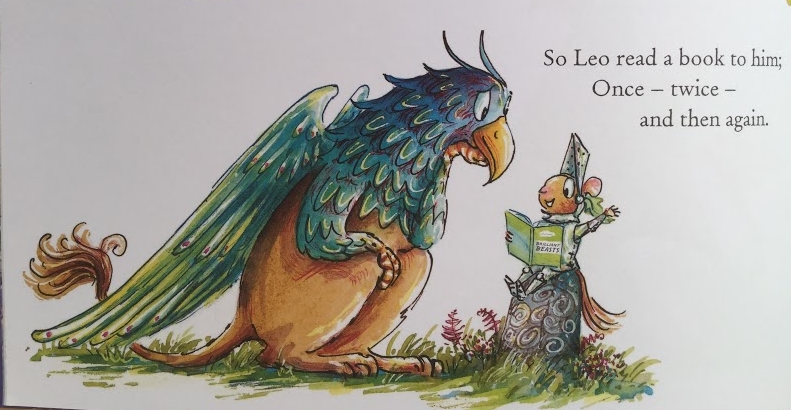
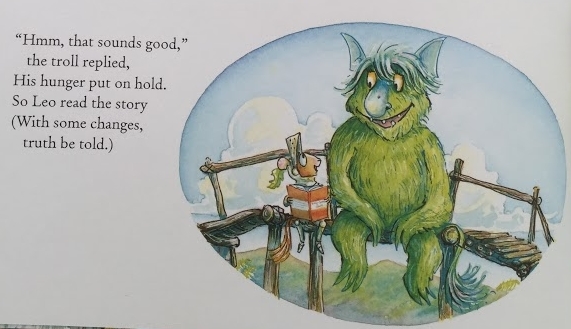
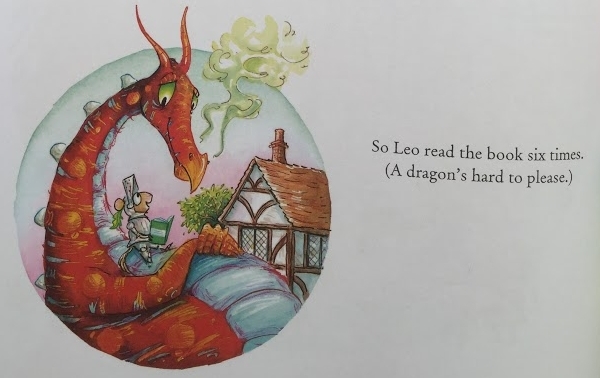
Closeness with a loved one when reading, also known as joint attention reading, not only brings comfort, it also helps children learn. This is emphasised greatly within the visual narrative by the fact that those Leo is joint reading with are supposedly scary beasts, highlighting further the transformative powers of book sharing.
The use of light is also quite striking in the book; we know how important light is in making children feel safe at night-time. In both concluding spreads of The Snatchabook and The Knight Who Wouldn’t Fight, the radiance and warmth of light against darkness of the night surrounding the characters are used beautifully to convey the sense of contentment and sanctuary that reading brings:
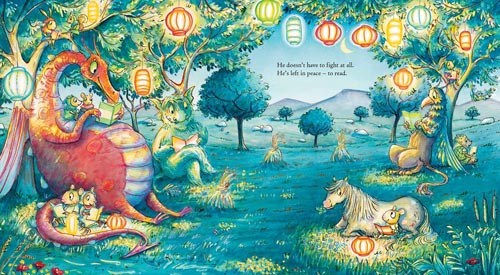
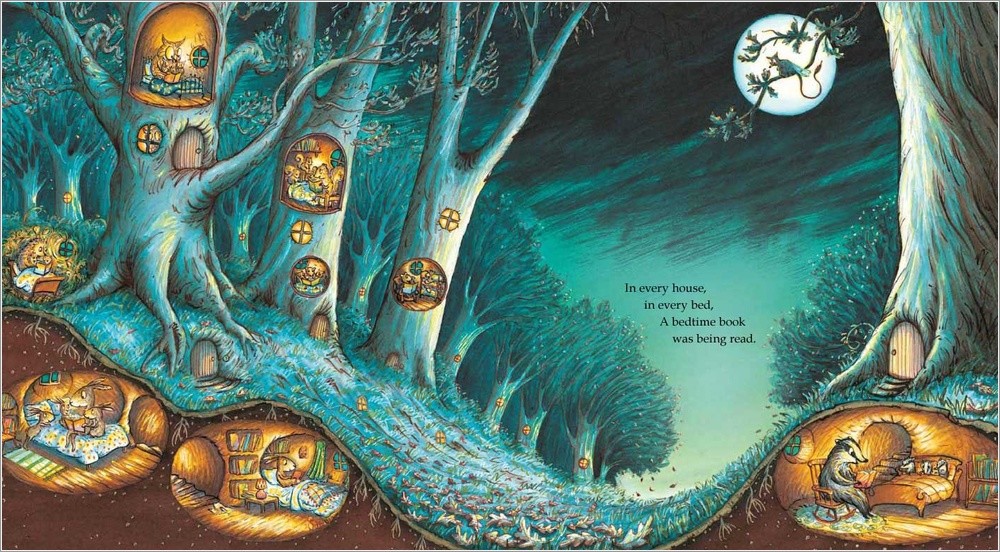
Picturebook enthusiasts know just how much louder than words pictures speak for the little people that read them; they express those feelings that can be so difficult to put into words. With The Knight Who Wouldn’t Fight, Helen and Thomas Docherty have created a narrative which is exciting and entertaining with a big important theme at heart.
The Knight Who Wouldn’t Fight is out now and you can purchase a copy here.
All artwork © Thomas Docherty
Source: review copy from publisher

